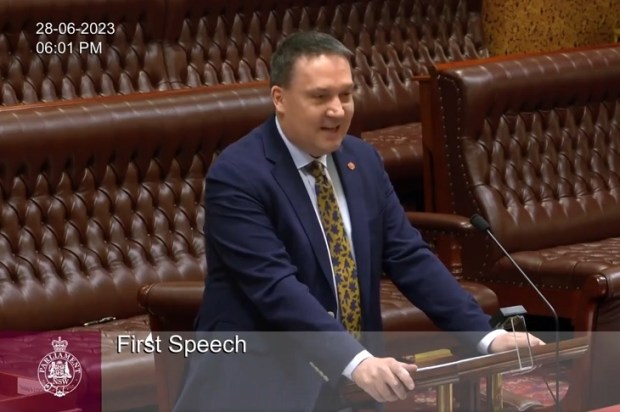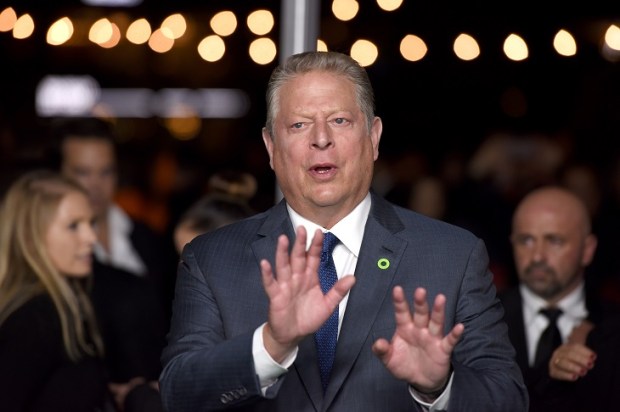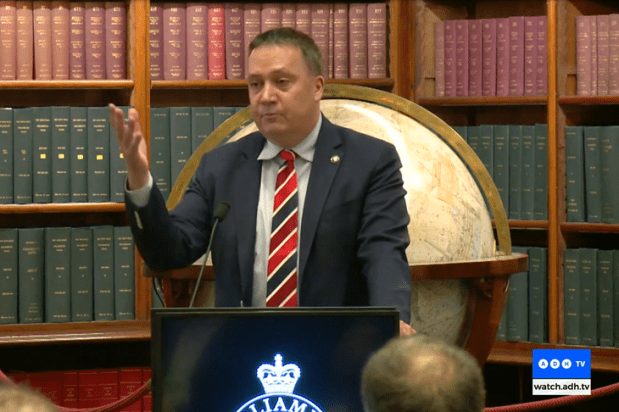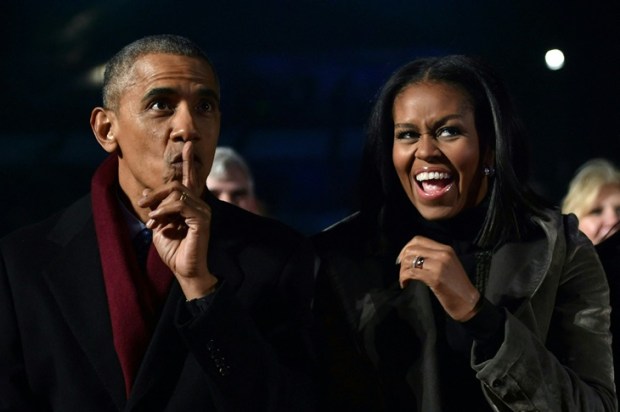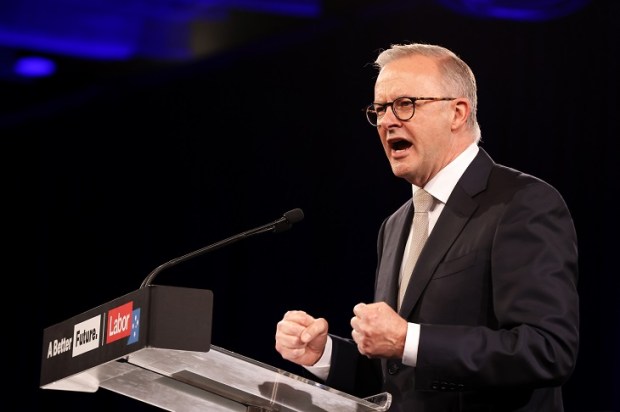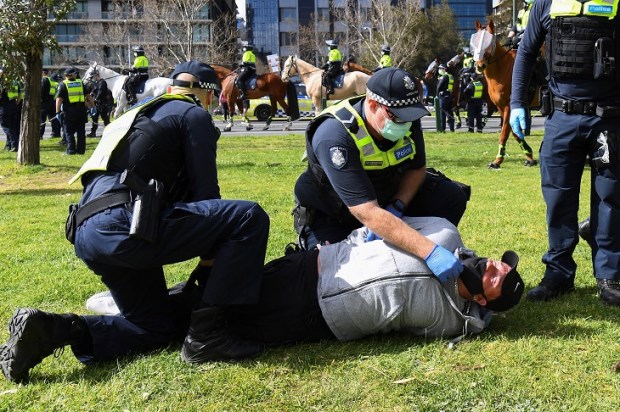It’s hard to overstate the social upheaval associated with the prohibition of alcohol in America a century ago.
The sorry saga of banning one of mankind’s most ancient practices had its institutional beginning in 1826 with the founding of the American Temperance Society (ATS). The ATS’s mission was to encourage individuals to take a public pledge of lifetime abstinence from alcohol. The ATS mushroomed and within ten years there were 8,000 local chapters and well over a million members. Half were concerned wives, making the temperance movement not only the first mass social movement in America, but also the first in modern Western history where women were prominent.
With growing clout during the 1800s, the temperance movement morphed into something different. What had been about voluntary personal responsibility became a political campaign in favour of laws criminalising alcohol. The carrot was out – the stick was in. In 1893 the American Temperance Society was supplanted by a new force – the Anti-Saloon League (ASL). The ASL was not concerned with the rehabilitation of individuals – its focus was cajoling state and federal legislators. The ASL was soon America’s most powerful lobbyist organisation.
Momentum picked up further when the mostly rural protestant cause was joined around the turn of the century by another burgeoning force – the Progressive Movement. These liberal-minded city folk agreed alcohol was a social evil and since they were fond of grand social engineering schemes, they too proclaimed the law must ban alcohol. Progressives claimed a booze-free world would end poverty, crime, violence, and sexual immorality (these schemes always over-promise and under-deliver).
It was an extraordinarily successful political campaign – when the climax came it was even better then hoped for. In 1919 the ‘land of the free’ didn’t just pass law to ban alcohol – America amended their sacred constitution so no state could leave the door (to the pub) open.
It’s usually difficult to amend the American Constitution. Two-thirds of the Senate needs to approve the amendment and then the House needs to do the same (or vice versa). The proposed amendment then needs to be approved by three-quarters of the state Congresses. By 1919 however, the campaign to amend the constitution to ban alcohol was a cakewalk. Both Houses of Congress easily reached the two-thirds threshold followed by a whopping 46 of the then 48 states. Every powerful institution was in favour – the major parties, newspapers, law enforcement, churches, and communists. The only significant groups opposed were the politically powerless city social set plus Greek and Italian migrants.
Thirteen years later, America for the first (and so far, the last) time un-amended an amendment to their constitution and in the depths of the Great Depression the pubs re-opened. America’s experiment in banning alcohol was over and no public figure has since questioned it – the Anti-Saloon League re-badged and became a rehab centre for alcoholics that exists to this day. Those years of prohibition are, however, the textbook example of the folly and of the many unintended consequences (all bad) of government mandates to ban products consumers very much want.
The banning of alcohol likely did reduce consumption, but it’s hard to know since it was a black market. Underground booze was often toxic and drinkers poisoned or over-consumed not knowing how much alcohol was in a drink. The federal government was so hellbent on prohibiting alcohol it conspired to deliver poisonous alcohol in the hope it would prevent consumption. Much of the bootleg alcohol was corruptly derived from the still legal industrial alcohol industry. The government therefore insisted on poison being included in the manufacture of industrial alcohol so the bootleg version would retain the poison. On New Year’s Day 1927 in New York City there were 41 deaths as a result of government-sanctioned poison. Nothing curbed demand.
Enforcing the booze ban tied up the police and the courts for years with petty offenders. The huge winner obviously was organised crime – the tax-free profits were monstrous. As gangsters rose in power so did turf wars and parts of big-city America resembled low-intensity civil wars.
The great tragedy of prohibition was that the lesson was not learnt. No two public policy reforms are identical but surely the parallel between prohibiting alcohol and prohibiting cannabis is blindingly obvious.
In 2022, the failed war on pot is winding up worldwide. Around a third of America’s states have legalised pot and another third have permitted ‘medical use’ (which is near-legalisation). A Gallup poll last November found 68 per cent of Americans support legalisation which means, like repealing the ban on alcohol, the people do not want to go back to the bad old days. Cannabis today is freely sold in shops from Canada to Thailand and Germany is drafting legislation that will make it the first European nation to legalise though half of Europe has already approved it for medical use. In 2020, New Zealand held a referendum of legalising cannabis – 48.4 per cent voted in favour so it narrowly lost but the end of the nuttiness is obviously nigh.
Cannabis has turned up in archaeological sites across Asia going back 10,000 years. Prior to the 19th century cannabis use was not only common in Asia but also Africa and the Middle East. In the 1830s cannabis began being exported from India to Britain where it was enthusiastically prescribed as medicine. It soon became a recreational experience but by the 1930s almost the entire world had criminalised it.
The global ‘War on Drugs’ was led by America. Just as the alcohol ban was going out of favour, a bureaucrat named Harry Anslinger moved to protect his fiefdom. Anslinger’s job had been the enforcement of the booze ban but with the repeal of prohibition nigh, Anslinger calculated he needed a new crusade – the nationwide illegality of cannabis and the enforcement thereof. Anslinger blamed cannabis on high-profile crimes but scholars today dismiss cannabis as a factor. He renamed cannabis by its Mexican name, marijuana, and wrote an influential essay called Marijuana– Assassin of Youth. Central to the campaign was that it was a drug that made blacks and Mexicans lazy and violent. This was the bad old days of overt racism. The war on cannabis was wildly trumpeted in the press by newspaper mogul William Randolph Hearst but he too had an ulterior motive – Hearst had commercial interests in preventing the production of hemp-based paper in favour of timber-based paper.
That crusade saw Anslinger employed from 1930-62 as the First Commissioner of the Federal Bureau of Narcotics putting his longevity on par with, and largely overlapping, FBI Director J Edgar Hoover. Anslinger won and cannabis consumption was cemented in as a crime in America and worldwide. The demand remains unabated however and endless millions every year risk entering the criminal justice system because they smoke a joint. Most of course are unapprehended but it’s often the first time they’ve unnecessarily taken a step into the world of crime.
There is a credible debate over whether cannabis can cause psychotic reactions in a small number of users. The extent of this phenomenon is hard to measure but it is an important debate and if accurate the problem is better managed by the product being consumed out of the shadows. Peanuts cause fatal/near-fatal reactions in around 2 per cent of people. We don’t ban peanuts but we do identify those at risk and put in place measures to prevent that 2 per cent consuming peanuts. That important work would not be the success it is if peanuts were illegal.
Some report positive reactions to mild doses of cannabis. It is possible those making this claim are delusional and that pot is a net negative in every consumer’s life but so are many things we don’t ban like soft drinks, hamburgers and … um alcohol.
One of those who spoke glowingly of the effect of cannabis was Dr Carl Sagan – the public face of NASA in the 1970s and 1980s and the producer and star of the most popular TV science series ever made, Cosmos. In 1969 Sagan contributed an essay to a book – Marijuana Reconsidered (he had to write anonymously as he didn’t want to damage his academic career). The book was mostly written by Harvard psychiatrist Lester Grinspoon. It was the ‘pot-smoking Sagan’ who encouraged Grinspoon to objectively assess the impact of cannabis use. Grinspoon began that research believing his friend Sagan was in error and that cannabis was a dangerous drug. His study changed his view and Grinspoon concluded the public had been grossly misled about its danger. Grinspoon was a tie-wearing lifelong academic but he too became a moderate consumer and reported a positive experience.
Grinspoon’s book kicked off the repeal movement and in it Sagan wrote, ‘My high is always reflective, peaceable, intellectually exciting, and sociable, unlike most alcohol highs, and there is never a hangover. The illegality of cannabis is outrageous, an impediment to full utilisation of a drug which helps produce the serenity and insight, sensitivity and fellowship so desperately needed in this increasingly mad and dangerous world.’
Sagan may have been right or maybe he would have been even greater figure without his decades-long use of cannabis. Surely this is a decision for the individual and not the state. And surely, we do not want to empower the criminal element any longer by continuing with the counter-productive war on cannabis. Tax and regulate it if you must but it’s criminal to criminalise cannabis.
John Ruddick is the Liberal Democrats upper house candidate for the NSW election.


